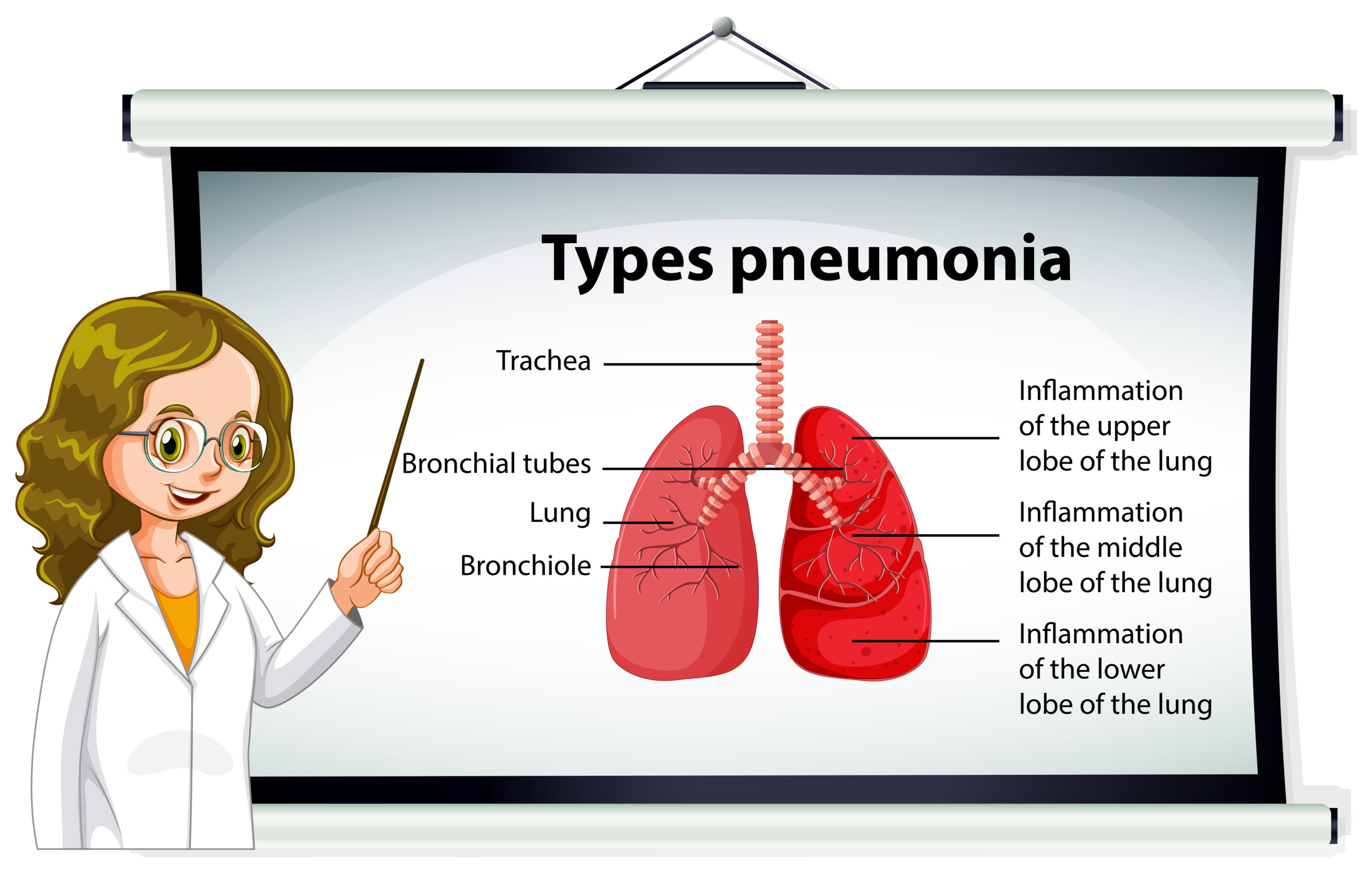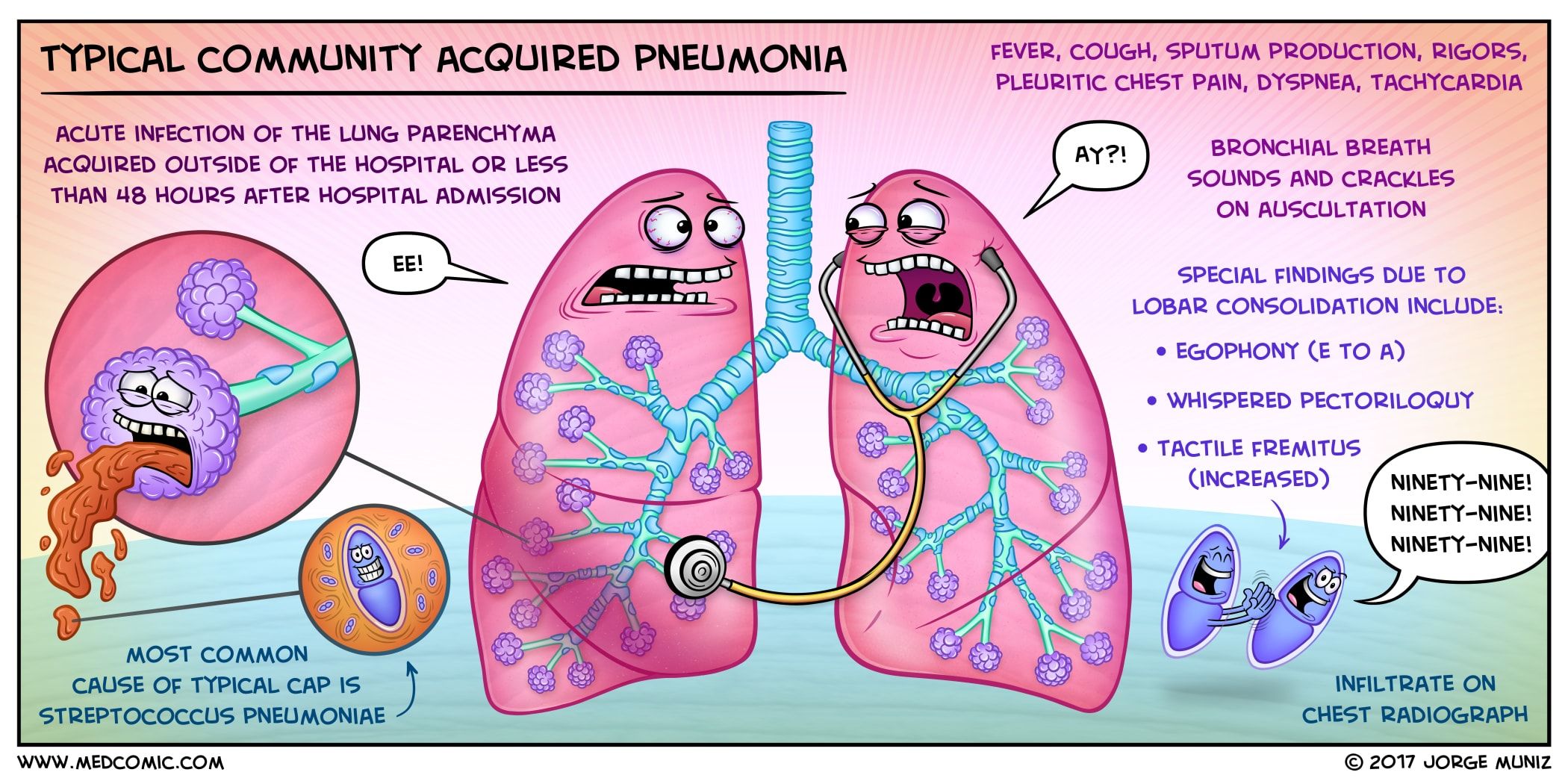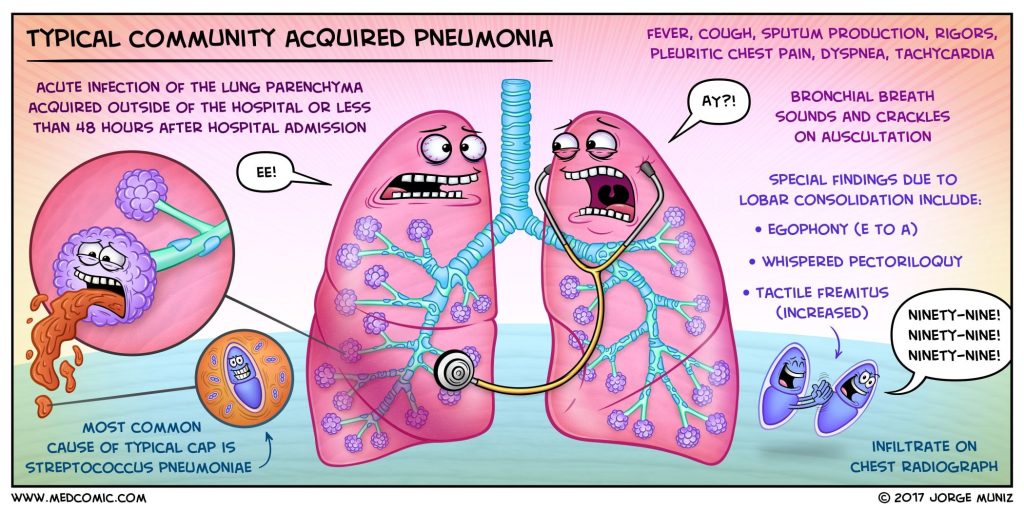Pneumonia is an infectious disease that primarily affects the lungs, although it can also affect other parts of the body. It’s caused by bacteria or viruses and usually develops after a person has had exposure to either type of organism.
There are two types of pneumonia: bacterial and viral. Bacterial pneumonia is more common in adults than in children. The symptoms of this type of pneumonia include fever, shortness of breath, cough, and chest pain. A person with bacterial pneumonia may also have chills, fatigue, and muscle aches.
Viral pneumonia is less common, but it’s often more severe and dangerous. Viral pneumonia causes a runny nose, sneezing, coughing, sore throat, headache, nausea, vomiting, and diarrhea. In addition, people who develop viral pneumonia may feel tired, irritable, and have a low-grade fever that doesn’t go away even though they drink plenty of fluids.
If you’re not sure whether you have bacterial or viral pneumonia, take a look at your medical history. If you have a history of smoking, you’ll probably have bacterial pneumonia. People who have had chickenpox will likely have a mild case of viral pneumonia. Those who were vaccinated against the measles, mumps, rubella (MMR) vaccine before getting sick with chickenpox are more likely to develop viral pneumonia.
You should also know how long you’ve been sick with your current symptoms. If you’ve been feeling ill for only a few days, you might have something like the flu. But if you’ve been feeling miserable for weeks, you could have viral pneumonia.

Common symptoms of the various types of pneumonia
Most of us are familiar with the symptoms of most types of pneumonia. Here are some of the main ones:
Bacterial pneumonia:
This form of pneumonia usually appears suddenly and is characterized by a high fever, dry cough, breathing difficulties, chest pain, and vomiting. Adults who get bacterial pneumonia usually have a history of smoking and/or alcoholism. Children younger than 5 years old who get this type of pneumonia frequently have trouble swallowing.
Viral pneumonia:
This kind of pneumonia rarely occurs in children younger than 2 years old. When it does occur, it typically develops within 3 to 8 days after someone has been exposed to the virus. Young children and older adults are more likely to develop viral pneumonia than are teenagers. They often experience chills, a high fever that doesn’t go away even when they drink plenty of liquids, and a runny nose, sneezing, cough, chest congestion, and stomach pain.
Some cases of viral pneumonia are serious. It can lead to kidney failure, respiratory failure, and death.
Here are some ways you can treat these kinds of infections:
Take rest. You really need to be extra careful about resting during or after viral pneumonia because you can become very weak and vulnerable to complications.
Drink plenty of liquids. Make sure that you drink at least 10 cups of fluids each day. Avoid caffeinated beverages, alcohol, and sugary foods. These things make it hard for you to stay hydrated.

Stay home. Your doctor will want you to limit yourself as much as possible until you recover from your illness so you don’t pass the infection on to others.
All these above points are some common pneumonia symptoms of their various types and here we have also told you that what you have to do while you are facing any of the above symptoms. So it is necessary for you to try out all these different ways if you really want to treat your issue seriously. All these will help you to treat any other kind of infection in future.
Diagnosis of the various types of pneumonia
It’s important to note that there isn’t one way to diagnose all forms of pneumonia. Sometimes doctors use X rays to help them find out what type of pneumonia a patient has. Most of the time, however, doctors rely on certain physical exam findings and lab tests to determine which type of pneumonia a patient has.
Here’s a list of factors that doctors consider in making the diagnosis:
Infection:
The presence of an infection indicates that you have bacterial pneumonia. Usually, bacterial pneumonia is accompanied by a fever, a cough that produces white mucus, difficulty breathing, and chest pain.
Chest x ray:
If your doctor sees any abnormalities on an x ray, he may suspect that you have bacterial pneumonia. Some of the abnormalities that can show up on an x ray include areas of consolidation, cavitation, pleural effusion, and a large pneumothorax.
Treatment:
Doctors usually prescribe antibiotics to cure patients with bacterial pneumonia. Antibiotics work by killing the harmful bacteria that cause bacterial pneumonia.
Antiviral medicines:
Some doctors prescribe antiviral medications to patients diagnosed with viral pneumonia. These drugs prevent the spread of the virus so the patient doesn’t contract it again.
Prevention:
There’s no way to prevent bacterial pneumonia; however, you can avoid viral pneumonia by practicing safe sex, avoiding close contact with individuals who are infected with the herpes simplex virus, and getting a vaccination against the MMR vaccine.

